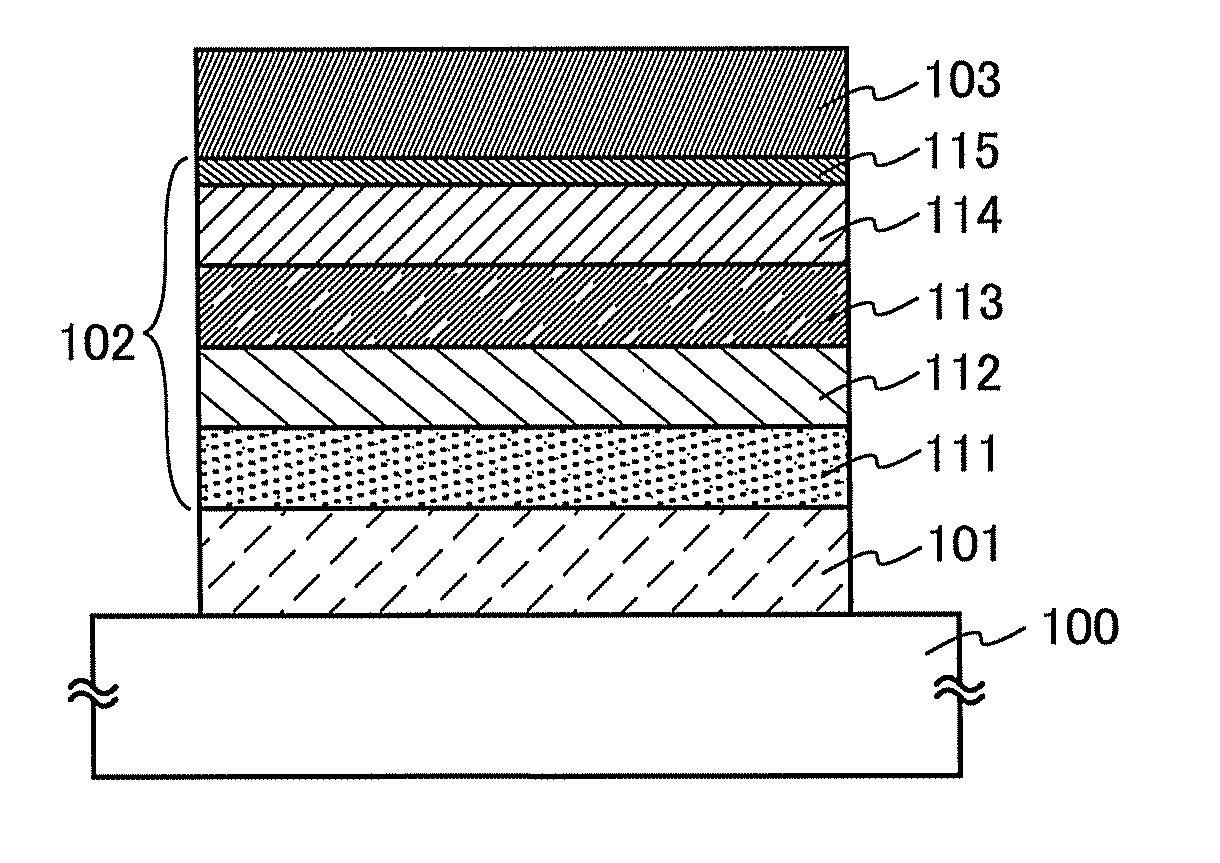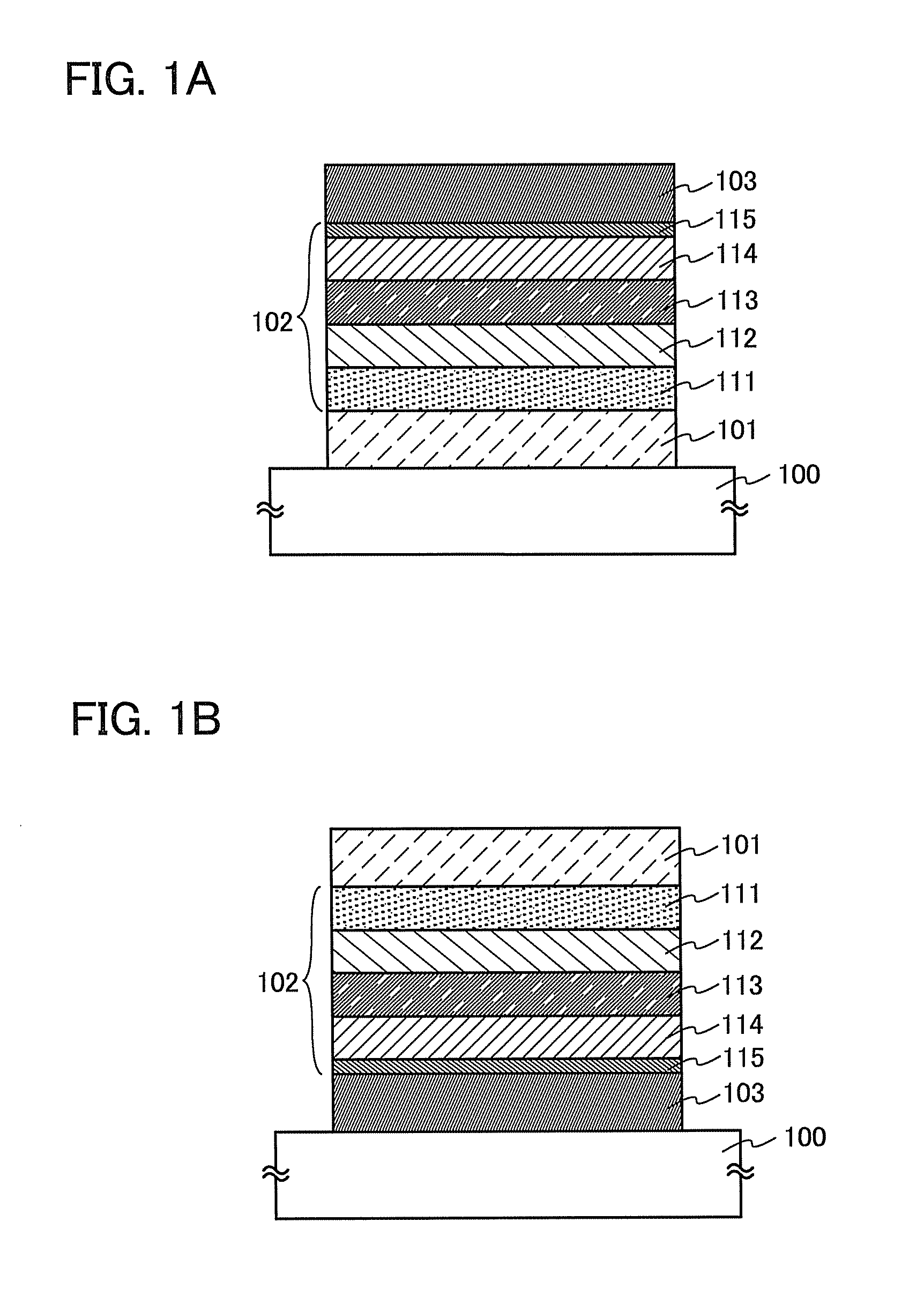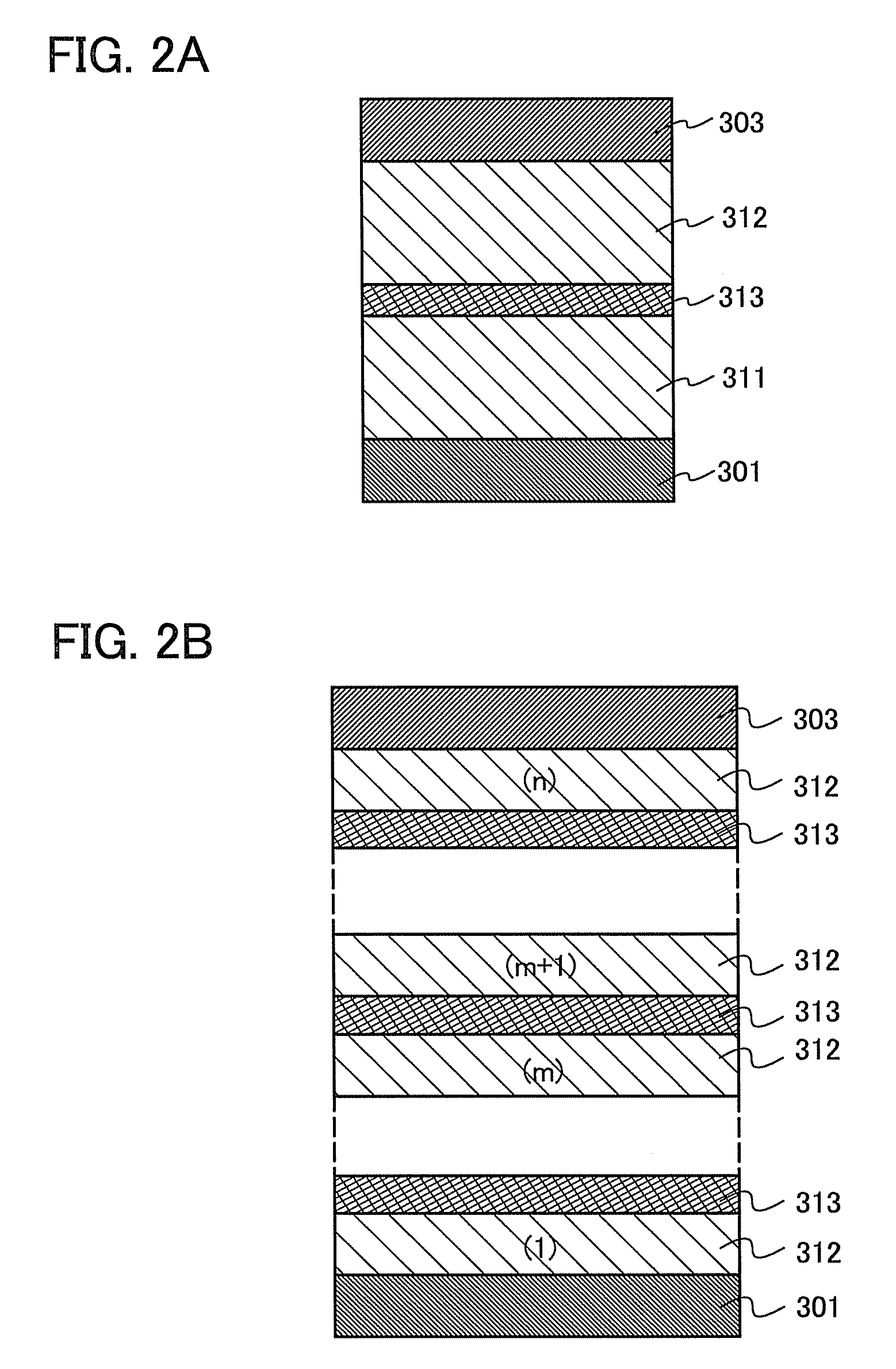Heterocyclic Compound, Light-Emitting Element, Light-Emitting Device, Electronic Device, and Lighting Device
- Summary
- Abstract
- Description
- Claims
- Application Information
AI Technical Summary
Benefits of technology
Problems solved by technology
Method used
Image
Examples
embodiment 1
[0085]In Embodiment 1, a heterocyclic compound of one embodiment of the present invention is described.
[0086]One embodiment of the present invention is the heterocyclic compound represented by General Formula (G1).
[0087]In General Formula (G1), Ar1 and Ar2 independently represent a substituted or unsubstituted aryl group having 6 to 13 carbon atoms, R1 to R11 independently represent any of hydrogen, an alkyl group having 1 to 4 carbon atoms, and a substituted or unsubstituted aryl group having 6 to 13 carbon atoms, and A represents a substituent represented by General Formula (S1) or (S2). In General Formulae (S1) and (S2), X represents oxygen or sulfur, and R12 to R18 independently represent any of hydrogen, an alkyl group having 1 to 4 carbon atoms, and a substituted or unsubstituted aryl group having 6 to 13 carbon atoms. Note that the carbon atoms in an aryl group in this specification mean carbon atoms which form a ring of the main skeleton, not including carbon atoms in a subs...
embodiment 2
[0115]In Embodiment 2, a light-emitting element in which the heterocyclic compound of one embodiment of the present invention is used for an EL layer will be described with reference to FIGS. 1A and 1B.
[0116]In the light-emitting element of this embodiment, the EL layer having at least a light-emitting layer is interposed between a pair of electrodes. The EL layer may also have a plurality of layers in addition to the light-emitting layer. The plurality of layers is a combination of layers that include a substance having a high carrier-injection property and a substance having a high carrier-transport property. Those layers are stacked so that a light-emitting region is formed in a region away from the electrodes, that is, carriers recombine in a region away from the electrodes. In this specification, the layer that includes a substance having a high carrier-injection property or a substance having a high carrier-transport property is also called a functional layer which functions, ...
embodiment 3
[0165]In Embodiment 3, a mode of a light-emitting element having a structure in which a plurality of light-emitting units is stacked (hereinafter, referred to as a stacked-type element) will be described with reference to FIGS. 2A and 2B. This light-emitting element is a light-emitting element including a plurality of light-emitting units between a first electrode and a second electrode.
[0166]In FIG. 2A, a first light-emitting unit 311 and a second light-emitting unit 312 are stacked between a first electrode 301 and a second electrode 303. In this embodiment, the first electrode 301 functions as an anode and the second electrode 303 functions as a cathode. The first electrode 301 and the second electrode 303 can be the same as those in Embodiment 2. The structures of the first light-emitting unit 311 and the second light-emitting unit 312 may be the same or different from each other, and can be the same as those described in Embodiment 2.
[0167]Further, a charge generating layer 313...
PUM
| Property | Measurement | Unit |
|---|---|---|
| Length | aaaaa | aaaaa |
| Nanoscale particle size | aaaaa | aaaaa |
| Nanoscale particle size | aaaaa | aaaaa |
Abstract
Description
Claims
Application Information
 Login to View More
Login to View More - R&D
- Intellectual Property
- Life Sciences
- Materials
- Tech Scout
- Unparalleled Data Quality
- Higher Quality Content
- 60% Fewer Hallucinations
Browse by: Latest US Patents, China's latest patents, Technical Efficacy Thesaurus, Application Domain, Technology Topic, Popular Technical Reports.
© 2025 PatSnap. All rights reserved.Legal|Privacy policy|Modern Slavery Act Transparency Statement|Sitemap|About US| Contact US: help@patsnap.com



